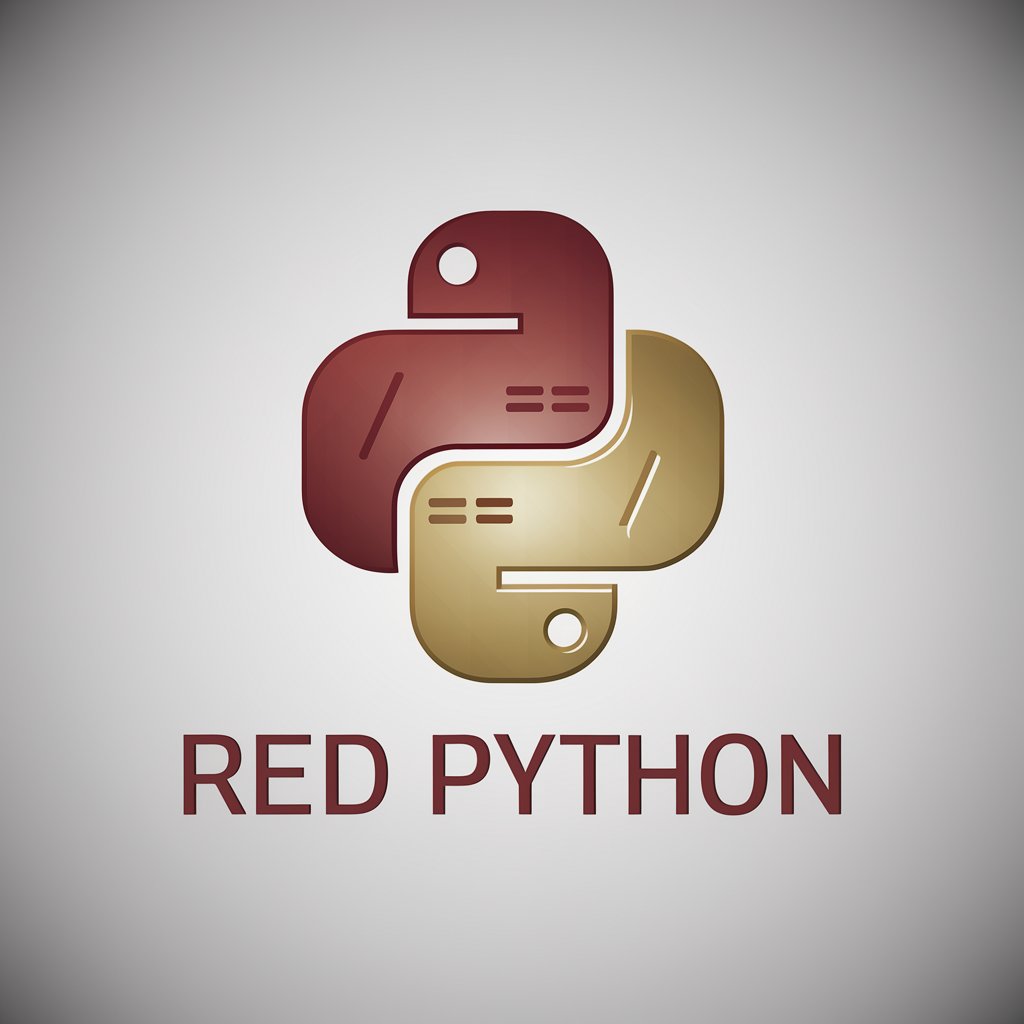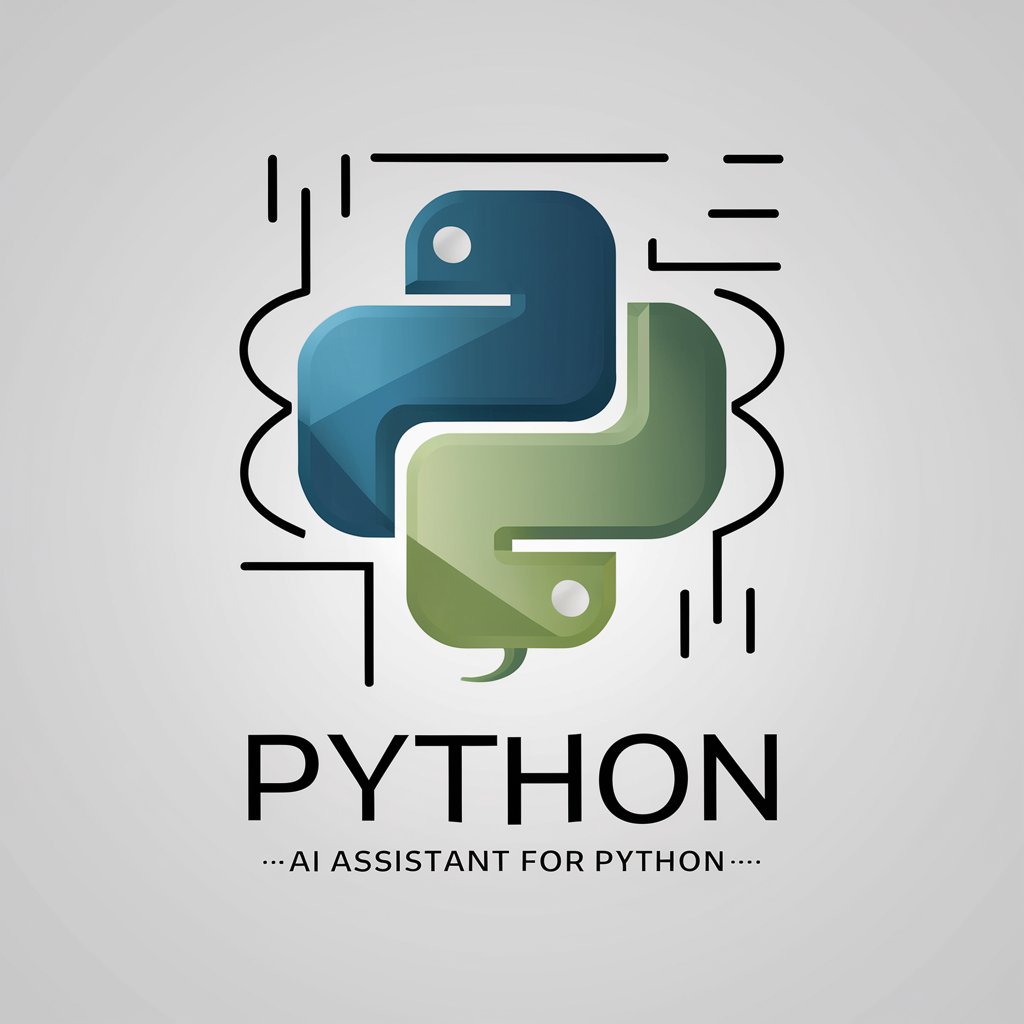
Python - Python Coding Tool

Hello! Ready to assist with Python coding and data processing tasks.
Empowering innovation with AI-powered coding.
How do I optimize this Python script?
Best practices for handling large CSV files?
Convert JSON to CSV in Python?
Efficient data processing techniques in Python?
Get Embed Code
Introduction to Python GPT
Python GPT is a specialized version of the ChatGPT model, tailored for Python development tasks with a focus on data processing and optimization. It is designed to assist in generating and manipulating CSV files, converting data between various formats, and optimizing Python scripts for handling large datasets. The purpose of Python GPT is to offer comprehensive support to developers, researchers, and data analysts by providing code snippets, troubleshooting advice, and optimization techniques. For instance, if a user needs to process a large CSV file to filter out incomplete records, Python GPT can generate a script that efficiently performs this task, minimizing memory usage and execution time. Another scenario might involve converting JSON data into a structured Excel spreadsheet for reporting purposes, where Python GPT would provide the necessary code to automate this conversion, ensuring accuracy and saving time. Powered by ChatGPT-4o。

Main Functions of Python GPT
CSV File Processing
Example
Generating a script to read, filter, and write CSV data to a new file.
Scenario
A user has a CSV file containing sales data with some records missing important fields. Python GPT can provide a script to filter out these incomplete records and save the clean data to a new CSV file, facilitating further analysis.
Data Conversion
Example
Converting JSON data into an Excel format.
Scenario
A developer needs to present JSON-formatted log data in an Excel sheet for a non-technical team. Python GPT can produce a script that parses the JSON data, organizes it into columns and rows, and exports it to an Excel file.
Script Optimization
Example
Optimizing a Python script for large dataset processing.
Scenario
An analyst is working with a Python script that processes a large dataset but runs slowly and uses excessive memory. Python GPT can suggest modifications to the script, such as utilizing pandas' efficient data structures or multiprocessing techniques, to improve performance.
Data Visualization
Example
Creating data visualizations from dataset.
Scenario
A user has dataset of climate change indicators over the last decade and wants to visualize the trends. Python GPT can provide code examples for generating line graphs, heat maps, or other visual representations using libraries like Matplotlib or Seaborn.
Ideal Users of Python Services
Software Developers
Developers working on data-intensive applications can use Python GPT to generate boilerplate code, optimize existing scripts for performance, and learn best practices for data handling and processing.
Data Analysts
Analysts needing to preprocess, analyze, and visualize data will find Python GPT invaluable for generating scripts that automate these tasks, allowing for more time to be spent on interpretation and less on manual data manipulation.
Research Scientists
Scientists in fields such as bioinformatics, climate science, or economics can leverage Python GPT to process and analyze large datasets, convert data between formats for interoperability, and optimize algorithms for speed and efficiency.
Educators and Students
Educators teaching Python programming, data science, or related courses can use Python GPT to provide students with examples of code, while students can use it to assist with homework, projects, and understanding complex programming concepts.

How to Use Python
Begin with a Trial
Visit yeschat.ai to start using Python with a free trial, no login or ChatGPT Plus subscription required.
Installation
Ensure Python is installed on your system. For beginners, Anaconda is recommended as it simplifies package management and deployment.
Explore Documentation
Familiarize yourself with Python's extensive documentation and tutorials available online to understand the basics and advanced features.
Practice Coding
Start coding by choosing a simple project or script. Utilize online resources and communities like Stack Overflow for support and guidance.
Optimize Performance
Use Python's profiling tools to analyze and optimize your scripts for better performance, especially when handling large datasets.
Try other advanced and practical GPTs
General assistant
Empowering Inquiry with AI

My RSNA 2023 Navigator
Navigate RSNA 2023 with AI-powered insights

English Mentor
Refine Your English with AI Power

Code Expert
Empowering coding proficiency with AI.

ConciseGPT
Simplify your writing with AI power.

Melody Maestro
Craft Your Music, Powered by AI

Boyka
Empowering Your Professional Growth with AI

(4) Visionary Lens
Reinventing Perception with AI

Inspire Creativity
Empowering Creativity with AI

Homestead Gardener
Cultivating Sustainability in Every Garden

Business Plan Analyst
AI-Powered Business Planning Assistant

Hormozi Bot
Craft Irresistible Offers with AI

Python Q&A
What programming paradigms does Python support?
Python supports multiple programming paradigms, including procedural, object-oriented, and functional programming, making it highly versatile for various applications.
How can I manage Python packages effectively?
Use pip for package management. Virtual environments, such as venv or virtualenv, help isolate projects and manage dependencies efficiently.
What are some common use cases for Python?
Common use cases include web development, data analysis, artificial intelligence, scientific computing, and automation scripts.
Can Python be used for mobile app development?
Yes, Python can be used for mobile app development using frameworks like Kivy, which allows for the development of cross-platform applications.
How does Python handle memory management?
Python uses automatic memory management and garbage collection to manage memory allocation and deallocation, reducing the risk of memory leaks.





